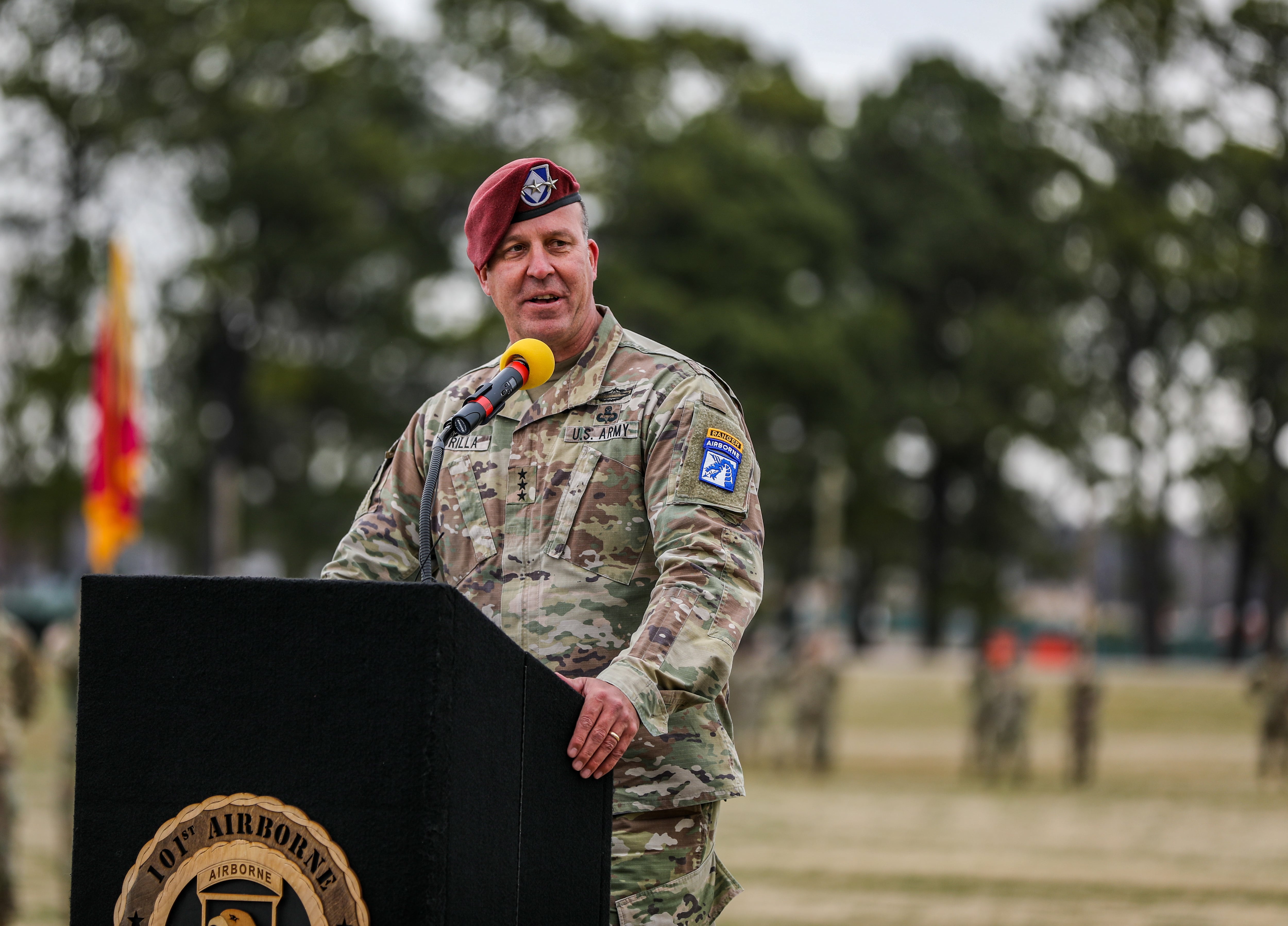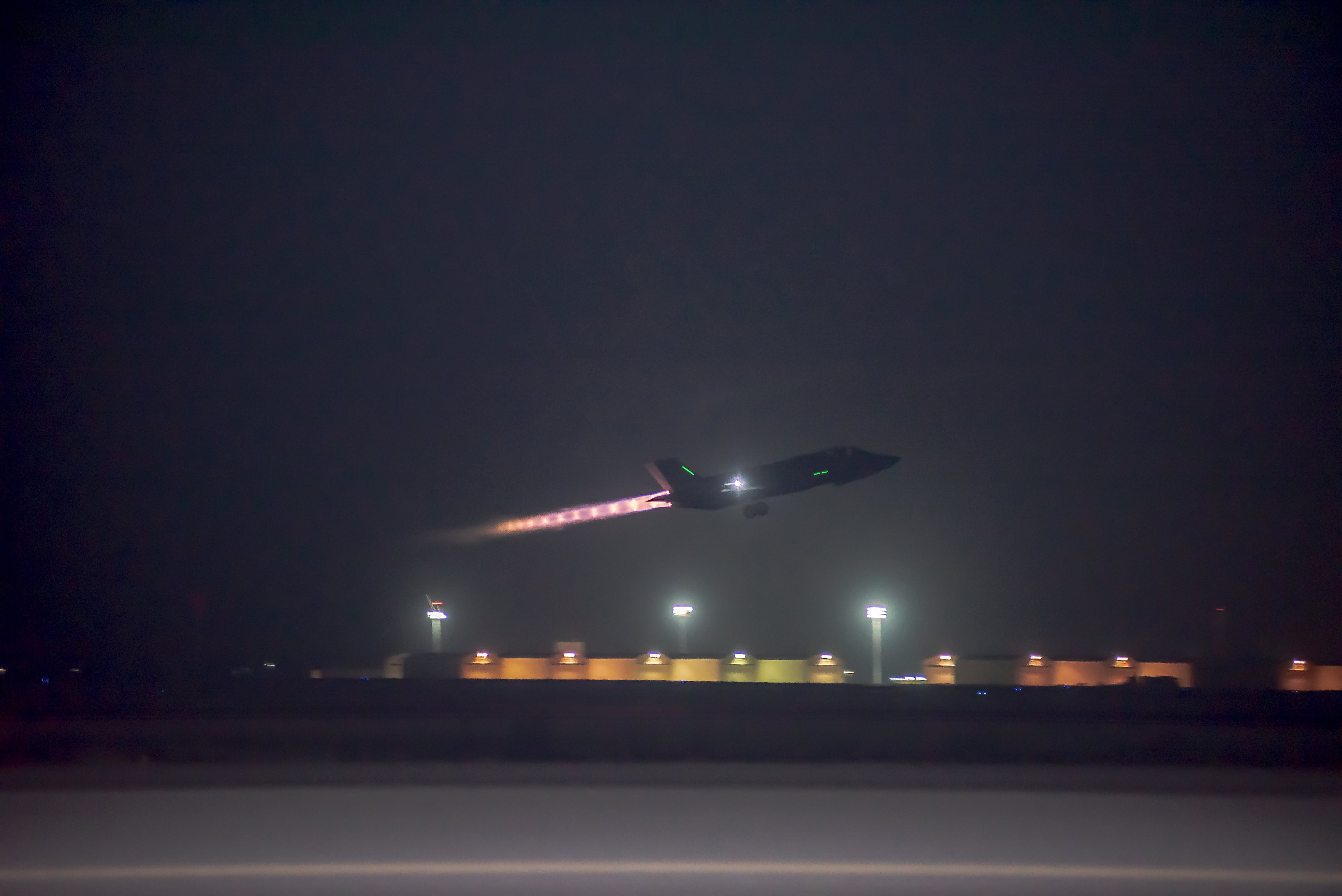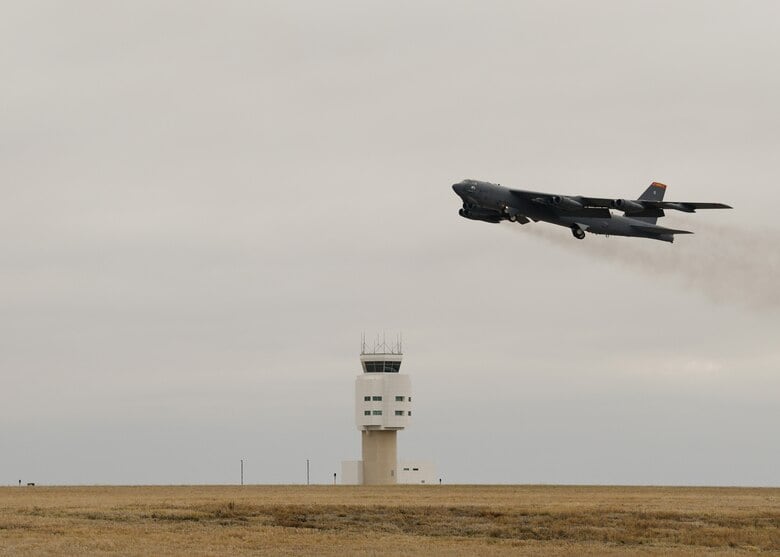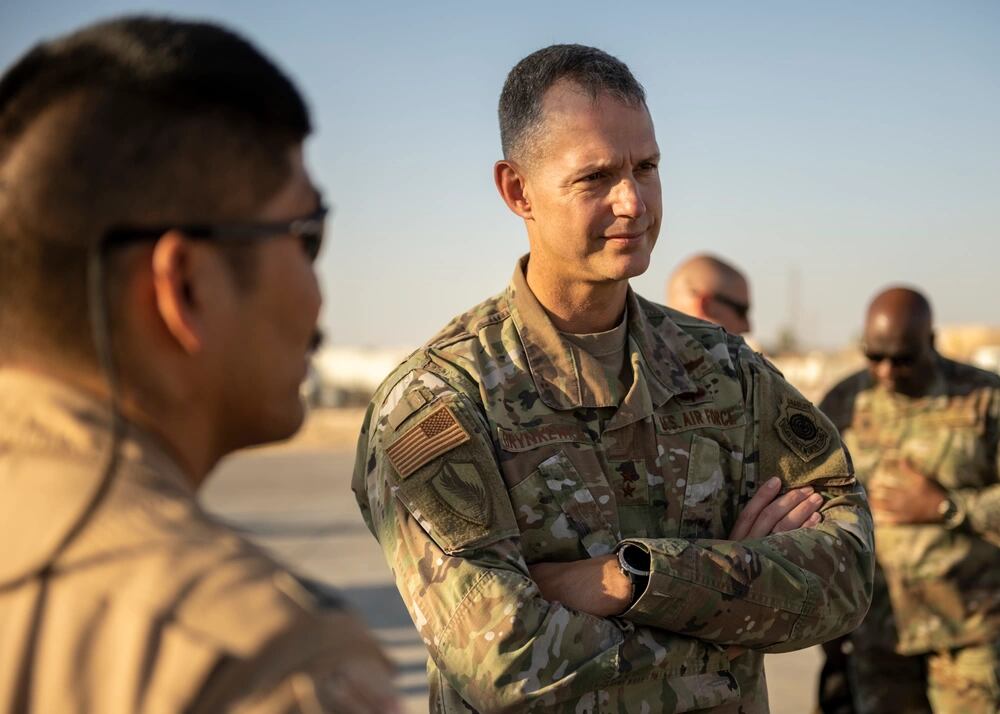The U.S. military’s budding “partnerships over posture” mantra in the Middle East, fueled by technological advances and policy proposals, could head off a need to regrow the American footprint in the region, the head of American air forces there told reporters Sunday.
“The real coin of the realm moving forward is probably not those ships and airplanes and soldiers’ boots on the ground,” Air Forces Central Command boss Lt. Gen. Alexus Grynkewich said in a call hosted by the State Department.
Grynkewich said that as the Pentagon gradually disengages from its longtime wars in U.S. Central Command, future success with a smaller military footprint boils down to: “How do we share information? How do we share intelligence? How do we gain a common understanding with each other?”
“There’s a number of really promising technologies that are out there,” he added.
RELATED

American officials are trying to address the issue from multiple angles. On an international level, the Biden administration has floated the idea of a Middle East air defense alliance that would give those involved more insight into potential threats headed their way.
Leaders in the Middle East haven’t warmed to the concept of a NATO-style alliance of states, Grynkewich said. Instead, they broadly support a looser partnership to piece together a clearer picture of air and missile threats across borders.
At issue are the ballistic missiles and small, armed drones used to attack and spy on U.S. forces and allies.
“The ballistic missile threat … doesn’t just emanate from Iran proper, but there are ballistic missiles that have been provided to militant groups in Iraq. There’s ballistic missiles in Syria. The Houthis down in Yemen have ballistic missiles,” Grynkewich said. “A threat to one of our partner nations or U.S. forces, coalition forces, in the region could really come from any direction.”
RELATED

Experts have warned that such an agreement is easier said than done, thanks to incompatible technology and distrust between nations.
The challenge ahead entails figuring out how to integrate disparate defensive tools like the U.S.-built Patriot missile batteries and Terminal High-Altitude Air Defense system, and Israel’s Iron Dome and David’s Sling missiles, into a singular hub that offers a 360-degree look at the surrounding area.
Though Grynkewich said CENTCOM has “adequate forces in the region to defend ourselves,” he noted that no one in the region has the resources to know everything that’s happening around them.
“The more that we can share information, then the more nations will be enabled to make their own sovereign decisions about the defensive actions that they want to take when a threat is coming their way.”
RELATED

In a similar vein, Grynkewich said that the U.S. Navy’s effort to adopt small drones as its main source of situational awareness at sea is going well enough that the Air Force wants to copy it.
As with the talks of a Middle East air defense alliance, Grynkewich is considering how to merge information from various airborne platforms to give troops a more complete understanding of what’s happening in the airspace around them.
Grynkewich praised the Navy’s 5th Fleet in Bahrain and its so-called “Task Force 59″ for taking the lead on a vision that could be cheaper and less complicated to piece together than typical military programs.
“We’re looking at the potential for enhanced use of drones — not the kind of drones that we’ve used in the past, but smaller, less expensive, that we can network in some way,” he said. “We’re looking at the unique placement of sensors that we can put up at high altitudes in order to build a broad situational awareness.”
The Pentagon has long sought a more holistic approach to how it gathers, analyzes and displays information about the areas in which service members work.
Standing in its way are concerns about how widely classified data should be shared, institutional distrust among the military branches and within their ranks, and old systems that can’t meaningfully compile the vast amount of data the military collects, among other obstacles.
Task Force 59 is one organization trying to solve those problems. It launched last fall to explore possible applications for artificial intelligence and similar algorithms in Navy assets.
At the time, U.S. 5th Fleet commander Vice Adm. Brad Cooper said the task force would bolster the airborne drones and other unmanned systems that are already in U.S. Central Command with other autonomous vehicles on and under sea.

In the meantime, the Air Force is using more traditional methods to help the Navy sail the seas uninterrupted.
“We provide a fair amount of armed overwatch, if you will, with surveillance capabilities that look to maintain broad situational awareness in the maritime domain that we share with … the fleet,” Grynkewich said. “We, of course, do from time to time provide overwatch for specific transits through strategic choke points.”
That eye in the sky keeps tabs on other movement in the area to ensure an American ship can safely cross the Strait of Hormuz, for example. GPS interference can also hamper a ship’s passage.
“It’s certainly not without its challenges. It’s very broad, very large,” Grynkewich said. “But we’re doing everything we can to ensure the safety and security of that domain.”
Rachel Cohen is the editor of Air Force Times. She joined the publication as its senior reporter in March 2021. Her work has appeared in the Washington Post, the Frederick News-Post (Md.), Air and Space Forces Magazine, Inside Defense, Inside Health Policy and elsewhere.




